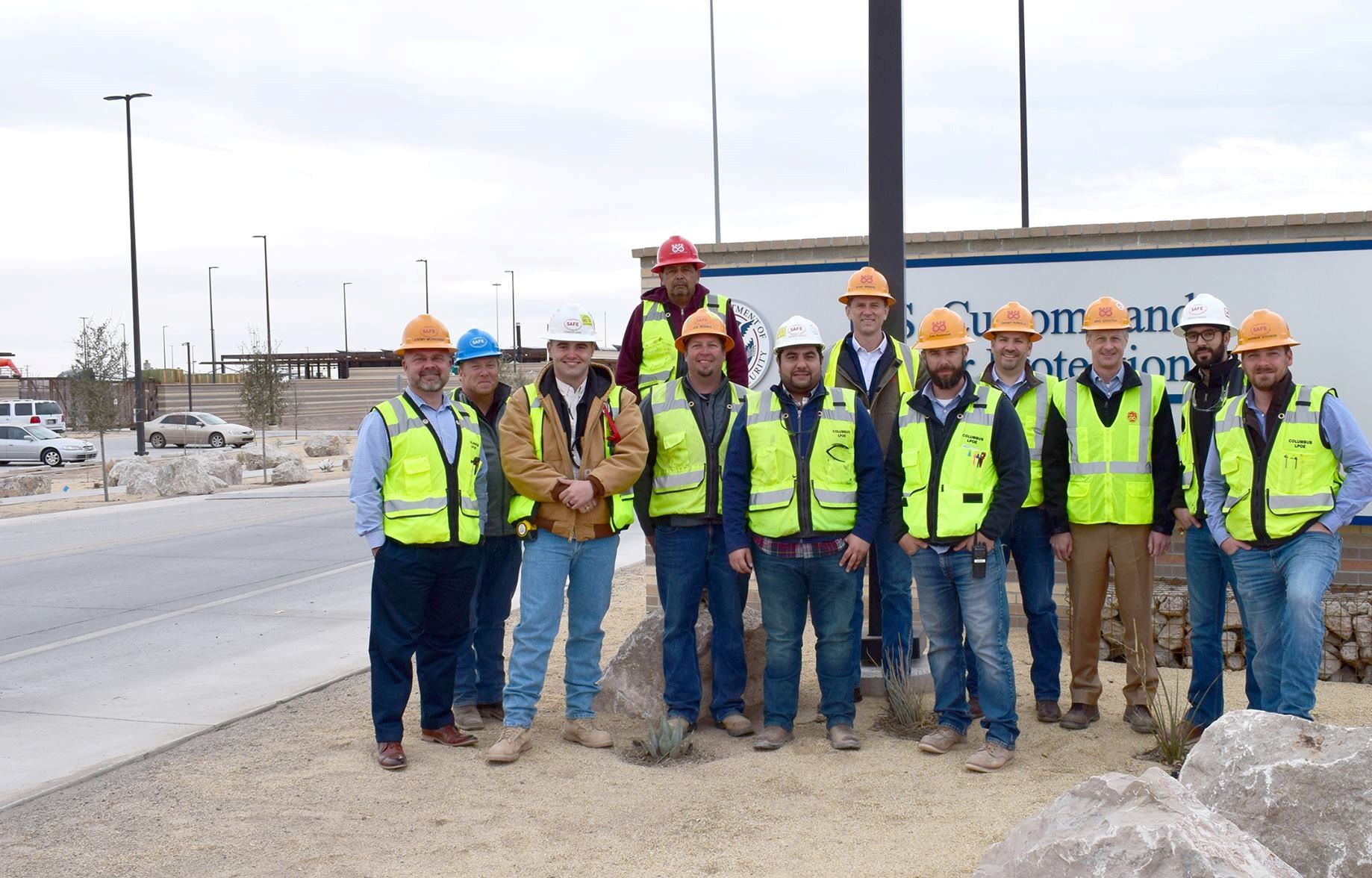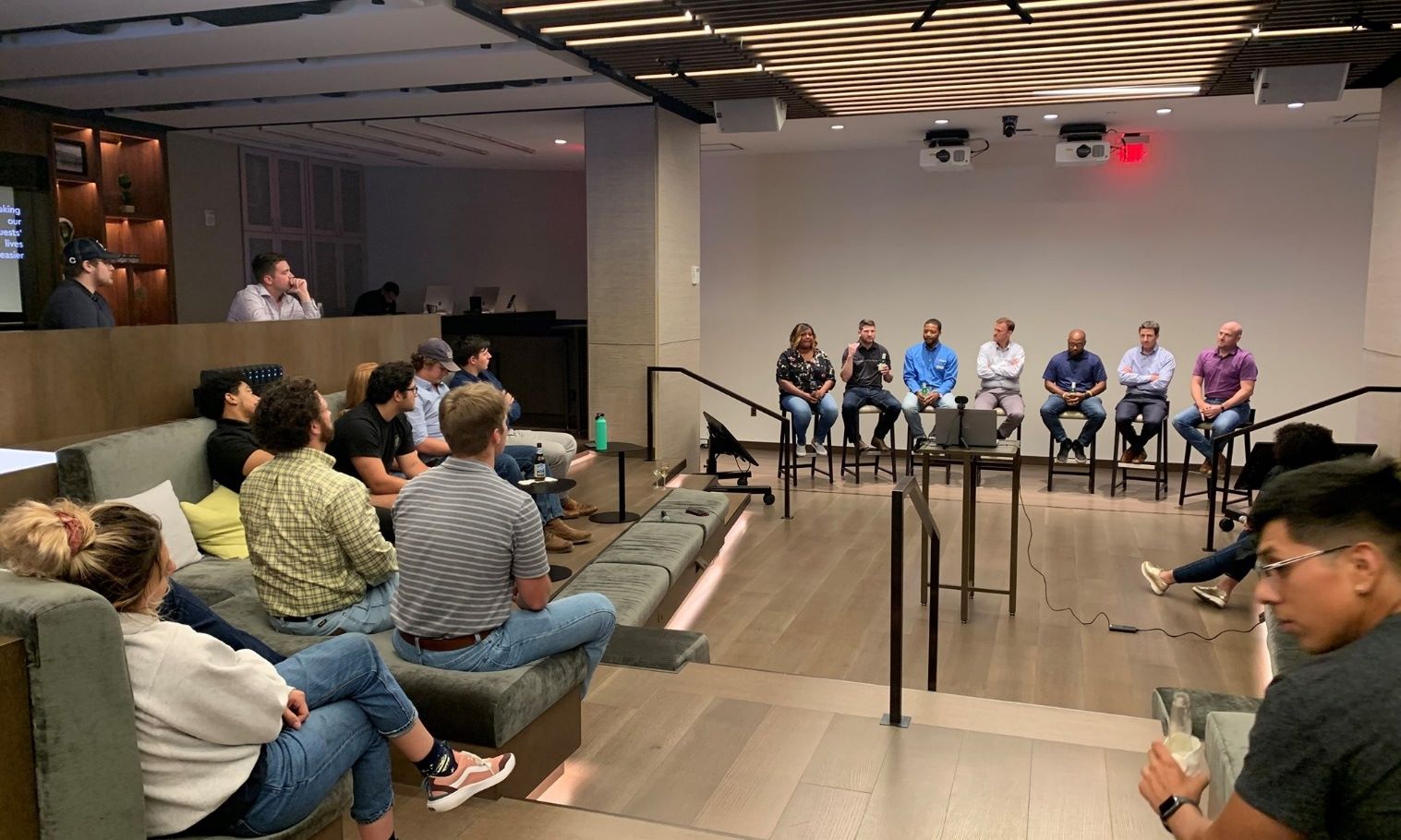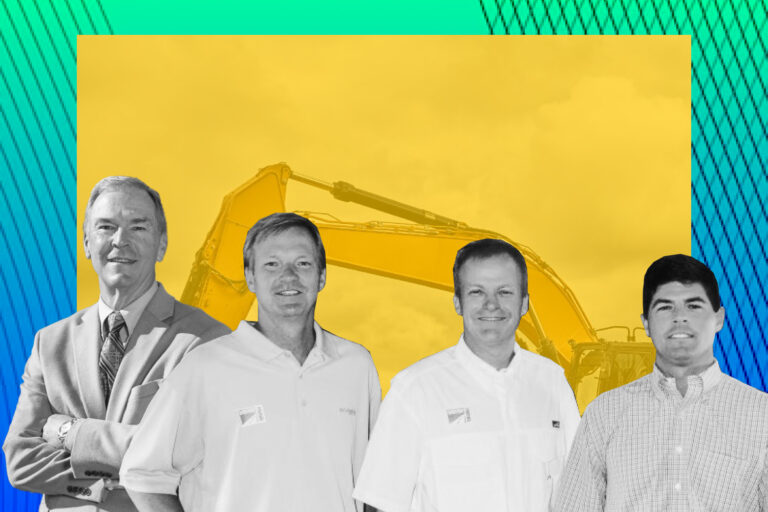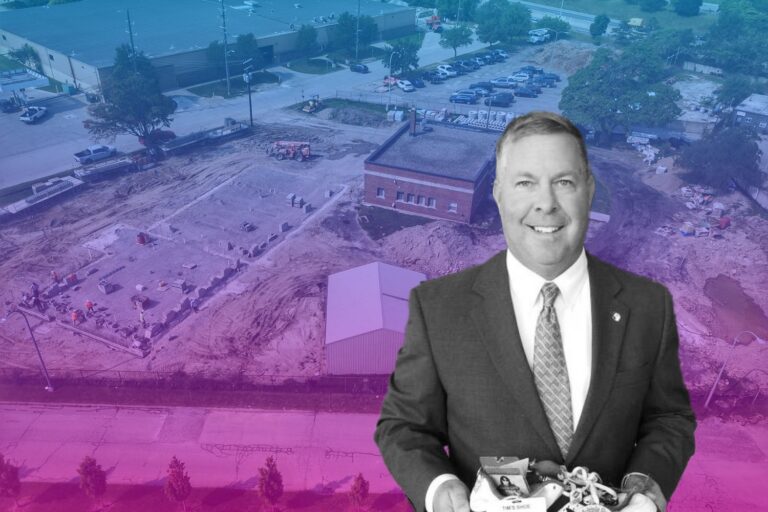Learn from Hensel Phelps the Ultimate Framework to Break Doomsday
Founded in 1937, Hensel Phelps specializes in building development, construction and facility services in a range of markets, from aviation to government, commercial, transportation, critical facilities, health care and transportation.
Based in Greeley, Colorado, the company employs about 4,000 employees across many states and is known as one of the largest employee-owned general contractors in the nation. But the story is not about the company itself but rather its people, the leadership and teams who has done amazing work on building a culture that set for success. How they did it and lesson learn?
Let’s start with the leaders!
A Framework to Navigate through Doomsday
Not all leaders know the best answers when it comes to difficult times, but last year’s downturn had put every leader’s ability to deal with adversity to the test. Each has their own beauty, and Mike Choutka – President and CEO at Hensel Phelps says it’s the theory of ‘fortifying and momentum’ that has guided teams out of hard-times.
Almost 30 years ago, Choutka began his journey with the company as a hard-working field engineer, whose job was all about browsing at sites and nowhere near the management. Fast forward to today, stand at a leader Choutka says it was the hard days on the field that prepared him for challenges of the presence. Especially, to cope last year’s slump the president based his strategy on momentum – the perpetual motion and fortifying – strengthen by adding.
The Origin of This Strategy
On an interview with Rob Shallenberger of the talk series BYB. The president shares the root where he learned the answers for 2020 tough time. “Our industry is a little bit different than a lot of others” he explains, the fact that when the economy shifts, either to the good or to the bad, the company generally have contracts in place that are two or three years in length.
That is why in 2008, when recession hit there was no effects at all, because the firm still had a lot of good projects to digest. Yet till 2011 to 2014, Choutka says it was the worst period the team went through, “we had so much work on the books that we had to go build to make up for financial holes”.
From that point on, the firm and the president himself has learned a lot of lessons. And the last five or six years since then, they have got a habit of building this momentum kind of ‘one step at a time’ – where you go consistently and bit by bit toward objectives.
The Beauty of Momentum

Back to present.
Even though it has been a challenging year, yet the question here is not ‘How can you survive this?’ but rather ‘What can you take with you to 2021?’. “I think about the last five or six years, and I think about all of that momentum that we built up to get to the start of 2020,” Choutka recalls.
This strategy is about reflecting back and thinking about why you should let all that momentum goes by the wayside? Why let all years all hard work of your people slip away? Do not let the excuse of ‘we had a rough year that is out of our control’ be a thing.
“And so, I’m telling our team, and I would share this with anybody in any industry is ‘Keep the momentum going’. And momentum is a great thing!”
About momentum, Choutka explains, it’s a physic term which means perpetual motion. Once you get things started, it’s easier to keep going – and once you are in motions, you could never stop, or anything could stop you. Once teams are able to get going on things, the stronger as well as more resilient teams become. And the way to do that is to reflect on the things that you had put in place and that got you to the present. The question now is about what are the goals your organization and teams has been planning and almost get it?
Continue with – what are the things that you can carry forward into the future of 2022, 2023 and go on? By let aside the paralyzing part of the business and focus on the step-by-step components that you can keep going.
“And so, I’ve challenged our team to look at this in two facets, regarding momentum. One is to conserve momentum and the term that I’ve used for that is fortified,” the president claims.
Fortifying by Adding
The second step of the strategy, he says, is to fortify things that do not live up to your standard. If excellency is your standard the let’s look at the things that maybe do not stack up to excellence and go solidify and fortify those. Especially at demanding time nothing is off-limits, when there is not so much resource for everybody, you have to look hard at everything and make your decision on it. Sparing the operations that do not meet or live up to company’s standard is the most common way to waste resources.
Coming along is the second piece of this step or also known as ‘adding the new’. How do you create some new things that will trigger momentum?
“Let’s not feel sorry for ourselves, let’s not think about all the things that happened to us. Let’s think of new ways that we can build on the momentum that we had and that we carried into the new days”.
The advice here is to not let the fear of failure get in the between you and growth, the only way out when part of the business is paralyzed is to put on new operations. Really, anything new now can be a stimulus for new motion!
Be prepared for things might not work, he says, but that’s why you have to be insisted to come up with new ways to create new momentum. However, this is not the same as tweaking and adjusting something old, this time it has to be something new and exciting. It has to be a noticeable improvement over whatever it is replacing. As Choutka puts it, you cannot bring up an amazing momentum just with mediocre ideas.
“And so, a few things that come to mind for us is, at the end of the year, I would usually write some kind of a letter or some kind of a year-end recap to our employees. Well, this year, I’m shooting a video. I’m going to do a video with graphics and really try to take it to a different level because I just don’t feel like a letter is appropriate this year.”
The Up-to-date Leading Style
More from the conversation, president Choutka also talks on many of the lesson he learned throughout life and over 30 years of pushing forward to the CEO chair. Lessons and values that have really impacted him at a personal level.
“I think the first thing is what I’ve learned over time – and this goes for just being a good person and also being a good leader – you have to be empathetic.”
Especially after the downturn of 2020 has drawn that ethos to light probably more than anything that he has witnessed and experienced. Leaders and teammates that have empathy for others are who actually care and look for what challenges others might be facing and include that into how they treat those people.

It’s about how you solve problems not your way but by the rules, how you interact in concern with others’ situation and relatively on the big picture. Choutka believes it was one of the greatest lessons he has learned from so many great people over years, and it was the core differentiator that get him to today’s success. And as a boomer himself, the president insists on replacing the old ‘my way’ leadership style with empathy.
“It all came together and became crystal clear to me that the past, jerk leader style just absolutely does not work anymore. And you have to be an empathetic leader.”
That is what people are looking for, what your talents are expecting and want to follow. Someone that could remain at the center of power and at the same time able to venture to the margins, able to put on others’ shoes yet understand what is unnecessary to cling on.
Being empathy as a leader, it is the same thing for being a good person.
Choutka recalls having been in business for a long time and came across so many different types of people and leaders. “I remember, as a young person in my career seen some leaders that were really hard-nosed and really tough.” At a point, the president doubted himself for he thought that was the only way to manage and lead people. “I can never do that, that is not how I am wired.”
But overtime, the landscape changes and new people flood in the industry, as well as having the opportunity to connect and interact with many people and perspectives, it dawns on him there are thousands of ways to be an ideal leader. You just have to align two values of what is important to you and what is important to your employee and teammates? All of that rooted in your ability to be empathetic and be elastic in front of people and situations.
“I want to be with people that are just positive, optimistic, really show a genuine level of care. And it’s not just for some end result, it’s really genuine.” And because you want it for yourself, he says, you also have to be one, especially as leaders be the first one to show genuine level of care toward others and then they will soon reflect it to their work and your organization.
The Art of Cultivating in-house Leader

Started out as an architectural engineer, Jim Pappas later came up to be Vice President and district manager of Hensel Phelps. Retiring last year, he talked about the foundation of growth, how people are the main stimulus for growth, and step by step on sprouting a desired workforce.
Decades over decades, the company keep expanding, especially experiences rapid growth in technology advancement, leadership training, education and revenue – which has proved how successful they are on enrolling and training people. It is not secret that the more diverse ideas you have in a room, Pappas says, the more successful your decision and solutions are going to be.
The Right Way to Approach Diversity
Competing in a growing industry, you have to be able to catch sight of the huge benefits for your business to invest in women and minorities who have been traditionally underserved. To make bold invest in education and commit to workforce diversity is not only a smart business decision, but at the end of the day, it is also the right thing to do.
“I believe the firms that evolve with both will be the most successful over time,” Pappas mentions how companies could only catch up if they are up to date with not only hi-tech but also new angle in recruiting.
Though still low, the number of women in supervisory roles in construction has been on a steady rise for the past 10 years—currently over 9% of the industry workforce. Hensel Phelps is proud that 15.7% of our team members are women.
Because it is really hard to change the culture of an industry without trailblazers, it is your mission to make a push for more female superintendents. Even though it required some amazing and talented women who are committed to leading the way, companies should be the host to nurture and empower that by providing intensive training and education.
More on from the diverse workforce, what is the right framework to approach this challenge?
As Pappas puts it, for inclusion to happens you need to recognize the need to sponsor networking opportunities and provide a channel to corporate leadership.
“So, we developed our personnel advisory team, a group made up of employees from a variety of ethnic and racial backgrounds, and fostered leadership networks, such as our Women’s Network, which was created specifically to support our employees and maintain morale and community ties through mentoring, outreach and advancement-related efforts.”
Step-by-Step Onboarding Culture

According to Pappas, recruiting process is not about companies choosing their hires, but about people who are inspired by your organization and choose you. So, make sure you are sending out transparent message on your standards and culture as it would save time for matching teammates as well as your operation.
“We typically have five senior-level staff interview the people we hire, ask different questions, and see if prospective employees are a good cultural fit,” Pappas explains.
After onboarding, the firm has teams go through different levels of training and teaching throughout their careers. The president insists, it’s a must for large organization to evolve a leadership development program, as a foundation for talents and teams to navigate their future at your organization and ready to commit. At Hensel Phelps, Peppas claims, the leader management system offers three types of training including one-on-one, classroom training and self-directed.
These systems are tools that should make your people come out as a better employee than they used to be, it should offer technical expertise blended with your culture. Another way to do it is to transfer folks, even on a temporary basis, in order to share and display your culture throughout the country. You know you are maintaining an outstanding workforce when you are a large company but because of how tight-knit teams are across states – it feels like a small company.
How Leaders Are Born from Within?
It is always a good thing for firms to be led by people who understand it thoroughly. And probably this is one of the key answers for Hensel Phelps’s success, whose leadership team is origin in fellow engineers on the sites. For example, both of the company president and vice president were started out as architect as well as engineer. And it was not only themselves that made it happen but also how the firm has created the opportunity for them to grow beyond.
At the company, there is a program called Leadership Development Initiative, where employees who have spent over five years with the firm be supported with specific trainings that are basically all soft skills based such as managing change, coaching and developing people, accountability, communication. You do not expect great leaders to emerge, Pappas says, you have to create leaders yourselves.
According to Pappas, the program started by doing survey on all of employees every two years and use that data to analyze and see where people are at within their careers and what some of the lessons are. “There is a lot of technical training within our industry, but there is very little training about relationships and people,” he adds, the company also spend a lot of time working to increase staff’s interpersonal skills which is necessary for project success even though it is not engineering related.

More from the connection between leaders, teams and the end result of organization.
Pappas says, in other to succeed, you have to know your people. By stressing on these specific questions: Do you listen to what they say? Do you know what motivate them? As the saying goes, ‘people do not quite on companies, they quit in managers.’
You should know where each of your staff are at personally and where they are at within the confines of the project because those two aspects intersect. If you don’t know what’s going on personally, it will affect the job site. Getting the best out of people is often doing what’s best for them overall.
And the tips for that is to challenge mangers to turn B-level employees into A and challenge A to take the next step.
The Bottom Lines
To navigate through challenging time, Mike Choutka – Hensel Phelps’s CEO talks about two simple principles he has learned in the course of previous recession. First, maintain the company’s momentum, fortify what is already working. Second, create new momentum, with new ideas to trigger the impulse.
Choutka and Jim Pappas also shares their thoughts on what attributes a good leader should have and how company could shape up outstanding leaders rather than expect them to emerge.









